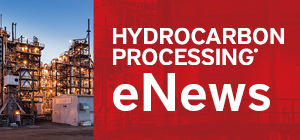Catalysts
Refinery catalyst selection: Facts and fictions every refiner should know
Most refiners carefully evaluate their refining catalysts to ensure maximum benefits over the catalyst cycle length.
Development/industrial application of FCC catalyst for boosting high-octane gasoline production
Globally, crude oil is trending toward being heavier; the proportion of heavy crude oil reserve is expected to be 50% of the entire recoverable oil reserve moving forward from 2020.
Flexibility in catalyst technology for improved bottoms upgrading
Bottoms product from fluidized catalytic cracking (FCC) is typically one of the least valuable products from a refinery.
Innovations
N’GENIUS Materials Technology has developed a new series of high-strength austenitic stainless steels that the company says will transform how materials are specified and utilized across the oil and gas sector.
Partners maximize profitability during the pandemic
The COVID-19 pandemic can be viewed as one of the most challenging periods in the history of the oil and gas sector. Refineries worldwide faced difficult times operating at their turndown capacities or even temporarily shut down units at the refinery.
Solving maldistribution: Catalyst loading and why it matters
Are your reactor yields lower than forecast? Does your fixed-bed catalytic reactor suffer from hotspots?
Clariant’s NiSat 310 catalyst adds polishing touch to Evonik-tkIS HPPO process at propylene oxide plant in China
Clariant Catalysts has teamed up with Evonik and thyssenkrupp Industrial Solutions (tkIS) in a major propylene oxide project for one of China’s largest rubber producers.
Why sulfur plants fail: An in-depth study of sulfur recovery unit failures—Part 2
Equipment malfunction or an unplanned shutdown of a sulfur recovery unit (SRU) can have a significant effect on a production company’s profitability, along with an equally serious impact on personnel safety and the environment.
Clariant & Technip Energies’ EARTH tech for energy-efficient H2 production wins first place - twice
Clariant and its engineering and technology partner, Technip Energies, were presented with two industry awards for their ground-breaking EARTH technology. ICIS is the world’s largest petrochemical market information provider.
Hydrocarbon Processing Award 2022 Winners Honored at Houston Gala
Nearly 150 of the midstream and downstream oil and gas industry’s brightest minds gathered Wednesday to find out, and celebrate, the winners of the 2022 HP Awards.

- ITT to acquire SPX Flow for > $4.77 B, expanding leadership in highly engineered components and adjacent flow technologies 12/5
- MOL Group introduces eco-friendly Bag-in-Box packaging for lubricants 12/5
- Addis Energy secures $8.3 MM to scale its transformative approach to low-cost ammonia production 12/5
- World Fuel Services supplies cruise line with waste-based biofuels 12/5
- Chevron announced $18 B-$19-B CAPEX budget for 2026 12/5
- Russia and India sign deal to build urea plant in Russia 12/5




